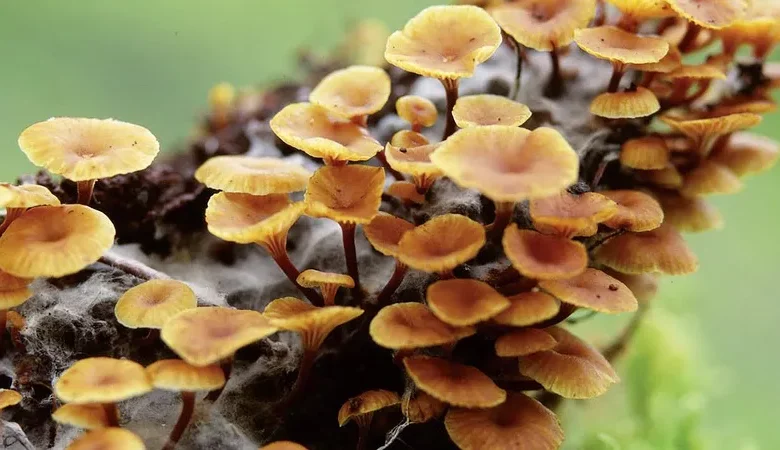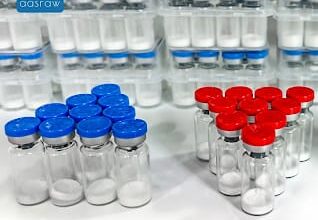What is fungi?

A growth is any individual from a gathering of eukaryotic living beings that incorporates microorganisms like yeasts and molds, as well as the more recognizable mushrooms. These creatures are delegated a solitary realm unmistakable from other eukaryotic realms, which in a customary grouping incorporates Plantae, Animalia, Protozoa, and Chromista. Explore more such topics on whatisss.
One element that isolates growths from plants, microbes, and a few protists is the chitin in their cell dividers. Growths, similar to creatures, are heterotrophs; They acquire their food by engrossing disintegrated atoms, as a rule by emitting stomach related proteins into their current circumstance. Parasites don’t perform photosynthesis. Development is their method for motility, aside from spores (some of which are whipped), which can travel by means of wind or water. Parasites are the significant decomposers in the environment. These and different contrasts place parasites in a gathering of related living beings, named Eumycota (genuine growths or eumycetes), that share a typical progenitor (for example they structure a monophyletic bunch), a clarification that has been recommended by sub-atomic phylogenetics. is additionally emphatically upheld. This parasitic gathering is unmistakable from the primarily comparative myxomycetes (mud molds) and oomycetes (water molds). The discipline of science dedicated to the investigation of growths is known as mycology (from Greek μύκης mykes, mushroom). Before, mycology was viewed as a part of organic science, despite the fact that it is presently realized that parasites are hereditarily more firmly connected with creatures than to plants.
Properties
Preceding the presentation of atomic strategies for phylogenetic examination, taxonomists believed parasites to be individuals from the plant realm because of likenesses in way of life: the two organisms and plants are transcendently stable, and have similitudes in everyday morphology and development living space. Like plants, parasites frequently fill in soil and, on account of mushrooms, structure particular natural product bodies, which now and again look like plants like greeneries. Organisms are presently viewed as a different realm, separate from the two plants and creatures, from which they seem to have isolated around a long time back (around the start of the Neoproterozoic Era). Also, check out what is a truffle.
Most organisms come up short on productive framework for significant distance transport of water and supplements, like the xylem and phloem in many plants. To defeat this limit, a few growths, for example, Armillaria, structure rhizomorphs, which structure and capacity correspondingly to establish roots. As eukaryotes, parasites have a biosynthetic pathway for the creation of terpenes that utilization mevalonic corrosive and pyrophosphate as synthetic structure blocks. The chloroplasts of plants and a few different living beings contain an extra terpene biosynthesis pathway, a construction that organisms and creatures don’t have. Parasites produce various optional metabolites that are comparative in structure or like those made by plants. The many plant and parasitic chemicals that make up these mixtures contrast from one another in arrangement and different attributes, which demonstrates the different beginning and focalized development of these proteins in organisms and plants.
Variety
The growth has an overall conveyance, and fills in many territories, including outrageous conditions like deserts or regions with high salt focuses or ionizing radiation, as well as remote ocean residue. Few can endure the extraordinary UV and enormous radiation experienced during space travel. Most fill in earthly conditions, albeit numerous species live halfway or entirely in oceanic natural surroundings, for example, the chytrid parasites Batrachochytrium dendrobatidis and B. Salamandrivorans, parasites that are answerable for the overall decrease in land and water proficient populaces. These creatures consume some portion of their time on earth cycle as a motile zoospore, permitting them to move themselves through the water and enter their land and water proficient hosts. Different instances of sea-going growths remember those living for aqueous region of the sea.
Mycology
Mycology is the part of science that arrangements with the orderly investigation of growths, including their hereditary and biochemical properties, their scientific categorization, and their utilization as a wellspring of psychoactive substances for people to eat for medication, food, and strict purposes. utilizes, as well as their risks. , like harming or disease. The area of phytopathology, the investigation of plant illnesses, is firmly related on the grounds that many plants are pathogenic organisms.
The utilization of growths by people traces all the way back to ancient times; ओtzi the Iceman, a very much safeguarded mummy of a 5,300-year-old Neolithic man found frozen in the Austrian Alps, conveyed two types of polypore mushrooms that might have been utilized as kindling (Phos fomentarius), or for restorative purposes. For (Piptoporus betulinus) Ancient people groups have involved parasites as wellsprings of nourishment for centuries — frequently accidentally — in the arrangement of raised bread and aged juices. The absolute most established set up accounts contain references to trim obliteration conceivably brought about by pathogenic growths.




